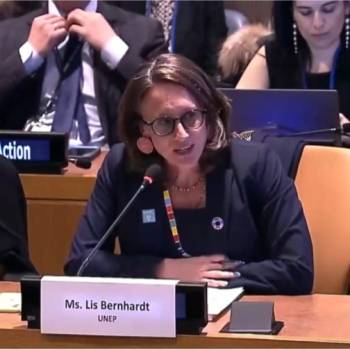
The United Nations Environment Assembly (UNEA) will meet on February 28 in Nairobi. A group of African countries proposed a resolution on the link between animal welfare, the environment and sustainable development. The Eurogroup for Animals and its members call on EU Member States to support this innovative initiative
After recalling the links between the welfare of animals, people and the planet, the text of the proposal - which can be read on theresolution website - calls on members of the United Nations to protect Animals and the Executive Director of UNEP to prepare a report on the link between animal welfare, the environment and sustainable development.
The world is facing global environmental challenges such as climate change, pollution and biodiversity loss, which are central to UNEP's mandate. At the heart of these challenges is often the food system, and therefore animal welfare.
The welfare of farmed animals and the production systems in which they are kept have an impact on the biodiversity and conservation of their habitat. Livestock are said to be "the single most powerful driver of habitat loss on Earth (1) " and 80% of land bird and mammal species currently considered threatened are facing habitat loss caused by agricultural activities. Intensification of livestock farming is also contributing to the depletion of marine stocks, as a significant proportion of them end up being transformed into food rich in proteins for pigs and chickens.
The livestock supply chain also accounts for 16.5% of global greenhouse gas (GHG) emissions. Even if fossil fuel emissions are stopped, emissions from the global food system would prevent achievement of the Paris Agreement's 1.5°C target and make 2°C difficult to achieve. (2)
Animal agriculture contributes significantly to global warming through the emission of methane, a potent greenhouse gas,(3) because methane and nitrous oxide decay faster than CO2, reducing the livestock numbers can have rapid effects on mitigating global warming. 4)
There is clearly a question of quantity, but the way we raise the animals is also important. According to IPBES, “about 25% of global GHG emissions come from land clearing, crop production and fertilization, with food of animal origin contributing 75%. Intensive agriculture has increased food production at the expense of regulation and non-material contributions from nature”. As well as potentially enabling higher animal welfare standards, grass-based and mixed livestock systems, less dependent on supplemental feed, also have better carbon sequestration capabilities .
The environmental impact, including water, soil and air pollution, of intensive livestock farming is considered significant. Livestock account for 64% of anthropogenic ammonia emissions that contribute to acid rain and acidification of ecosystems. It is the biggest source of water pollution, contributing to dead zones and eutrophication. Through the link to deforestation, livestock also increase runoff and reduce dry season flows. (5)
Far from explicitly including animal welfare in UNEP's mandate, the proposed resolution proposes to examine animal welfare - particularly its absence - as a potential factor of harm to nature . The proposal will be discussed by UN Member States ahead of the UNEA meeting, and the Eurogroup for Animals will join its partners in Nairobi to support the initiative.
We hope that UNEA 5.2 will be the stepping stone to addressing animal welfare globally. The connections between animals, the environment and humans are crystal clear and recognizing them is the only way to move forward in solving difficult global issues like climate change.
Ratings
1. Machovina et al (2015) quoted in Greenpeace, Less is More, 2018, p.25
2. Clark, Michael A. et al. 2020. Emissions from the global food system could prevent the achievement of the 1.5° and 2°C climate change targets. Science 370:705-708
3. FAO. 2006. The long shadow of cattle. Environmental issues and options.
4. Eisen, Michael B. and Patrick O. Brown. 2022. The rapid elimination of animal agriculture globally has the potential to stabilize greenhouse gas levels for 30 years and offset 68% of CO2 emissions this century. PLOS Climate 1 (2): e0000010.
5. FAO. 2006. The long shadow of cattle. Environmental issues and options.
Posted on 2022-02-21 18:34








Comments